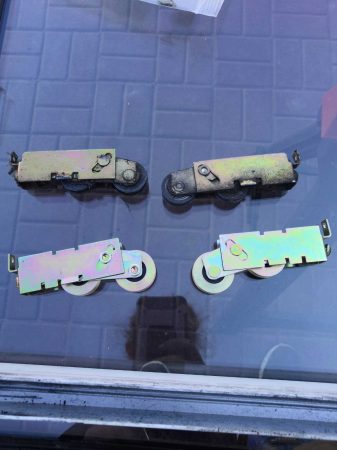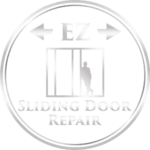Blog
Sliding Door Problems & How to Fix Them
Archeologists observed that Italy already had the crude technology of sliding doors as early as the first century CE.
The crude sliding doors of old Italy was a significant improvement to the primitive way of rolling a stone over the mouth of a cave.People used these crude sliding doors for purposes of security, privacy, and comfort to drive away from the external elements from the private premises.
Sliding doors have come a long way since the early Roman times in terms of design, materials, aesthetics, structure, and technology.
Despite the advances in sliding door technology, you may encounter a few problems. To help you out, we’ve compiled all the information you need to know about sliding doors and how you might want to get yours fixed. Check it out below.
Types of Sliding Doors
Nowadays, there are several types of sliding doors, such as:
1. In-line Sliding Doors
In-line sliding doors are the most common type of sliding doors. These are doors with panels on rollers that move on tracks.
2. Lift and Slide Doors
These are similar to in-line sliding doors. However, the doors rest directly on the tracks, but when the time is needed to slide the door panels, you can use the handle to “lift” the doors up onto its rollers ready to move and later locked down into a resting position.
3. Tilt and Slide Doors
A tilt and slide door is a sliding door combined with a tilt and turn window combined. When ventilation is the only requirement, then the tilt feature enables the panel to lean back and provide an opening at the top portion for ventilation.
4. Slimline Sliding Doors
These types of sliding doors provide a low profile, slim, and minimalist feature. It attempts to do away with a full-frame to offer more view area.
5. Pocket Sliding Doors
Pocket sliding doors disappear into a “pocket” or gap in the wall. Your architect should design these doors from the outset as an integrated part of the wall.
6. Open Corner Sliding Doors
These doors slide to reveal an open corner. It may be possible not to have a corner post, but these will have to be in close consultation with an architect or structural engineer.
7. Automatic Sliding Doors
These are sliding doors which open and close at the touch of a button and have automated functions.
Patio glass doors are among the popular type of doors with sliding door technology in residences. But sliding doors are also standard in commercial and retail establishments as well as in offices.

Why Should You Have a
Sliding Door at Home?
There are several advantages to having sliding doors at home. Some of these are
1. More Space
Sliding doors are usually wider than regular doors so that there is more space to move through. You can quickly notice this advantage when it’s time to push furniture or large packages through narrow spaces.
2. More Natural Light
Especially with glass sliding patio doors, more abundant natural light can filter indoors. More natural light will not only save on electricity bills but also provide a more airy and inviting ambiance. There are new energy-efficient framing features of door frames.
3. Illusion of Space
Sliding doors are much broader than conventional doors and, especially if they are made of glass or transparent material, will create an illusion of more space for seamless indoor and outdoor living.
4. Visibility and Security
Aside from the option for greater visibility and an unobstructed view to see outside, the door acting as a divider from the outside ensures security. Moreover, an outsider cannot lift a sliding door out of its hinges, which therefore enhances security.
5. Aesthetics and Beauty
A sliding door is a break from the average, usual door. It provides accent and, with various designs and materials, adds beauty to a residence.
Although there are several types of sliding doors earlier mentioned, there are two basic types of roller mechanisms:
●
Top Hung Sliding Doors. These
types of doors run on trolley hangers on the top of the door in a hidden and
concealed track.
●
Bottom Rolling Sliding Door.
Especially if a top-hung assembly cannot sustain the weight of the door, then
this is the recommended option. Thee doors run on tracks on the floor. Other
sliding doors are variations of this standard, bottom sliding door.
How Do Sliding Doors Work?
The heart of a sliding door assembly and mechanism are the rollers running on tracks. The roller mechanism may be above, for a top hung type or a bottom rolling sliding door. New technologies are merely variants of this fundamental principle.
These technologies include:
● Automation
● Use of new materials for sound- and weather-proofing
● Ease of use enabling the door to glide smoothly and be secured when it is not needed to slide
Issues You May Encounter With Sliding Doors
1. Dirty Tracks & Rollers
Nowadays, there are new sliding door designs wherein the tracks on which the door slides are not deep. This technological development might address the constant problem of dirt, debris, and grime collecting and accumulating along the tracks and the rollers.
A dirty roller and clogged door track will make the door difficult to slide. Added force to push the door may result in more damage to the tracks.
Some people think that merely vacuuming and picking out the dirt and debris will provide the solution. However, this may be temporary or inefficient since there may be crevices in the tracks and rollers which you’ll need to have properly inspected and repaired.
A sliding door repair specialist should be the one to provide a thorough inspection of the problem before these become a bigger, more expensive disaster waiting to happen.
2. Broken Rollers
Premium rollers may last well, but if there is continued mishandling of the door, the rollers may still deteriorate. Low quality or sub-standard rollers will not provide the needed glide for your sliding door and will always break and chip.
Usually, the root of a bigger problem is broken rollers. Strange sounds or an unusual effort in sliding the door is an indication that there might be damage somewhere. It is best to have a trusted sliding door repair specialist to inspect and assess the problem.
3. Misaligned or Uneven Doors
New and premium materials have practically eliminated the problem of warped or uneven doors and door frames.
However, even with quality materials, there may have been inadequate or improper installation causing misalignment and uneven action of the door sliding on its rollers.
Another possibility of rollers moving off the track would be the screws holding the rollers on the tracks. The screws may have become worn out, stripped, or loosened over time. Loose screws may result in the track being bent or damaged.
4. Damaged or Bent Tracks
Wear and tear, mishandling, or improper use may have worn out the tracks of your sliding door.
Initial symptoms may be a scraping or screeching sound when the doors slide along their track. Immediately call a rolling door repair specialist to avoid more significant and more expensive problems in the future.
Usually, it may merely need cleaning or servicing. Still, a rolling door repair specialist should be able to make the initial assessment to identify what cannot be seen by a mere ocular or visual inspection.
If these unusual sounds are unattended, the problem might fester, and the difficulty of opening or closing the doors will result. This problem may compromise the security and safety of the people in the proper egress and ingress into the property.
5. Faulty Locking Mechanisms
It may be the locking mechanism itself that is damaged, or it may be a festering symptom of a more significant problem, such as misalignment between the sliding door and its tracks.
But this will have to be immediately assessed by a sliding door repair specialist since the security and safety of the premises and its inhabitants are at risk if you do not have the problem of the locking mechanism promptly assessed and repaired.
6. Broken or Damaged Glass
A sliding glass door may break, crack or chip and even become foggy due to the environment or accidental use. You should address minor cracks promptly since this may result in the need to replace the entire glass altogether.
7. Gaps and Openings
Gaps between the door and the frame are most common in older types of sliding doors. These are usually energy inefficient. It may also allow unwanted insects and dirt to creep in. A specialist sliding door repair company could remedy this without replacing the entire door assembly.
8. Difficulty Opening & Closing
This problem might be the result of several factors such as but not limited to poor installation, worn-out rollers, or tracks. Not only are these problems annoying, but they are equally dangerous to the welfare and safety of the inhabitants or residents.
You may also note that a primary problem of sliding doors involves its rollers. And this, of course, is what makes sliding doors unique. It is what makes sliding doors, of course, slide.
There is no universal type of roller for sliding doors. There are different types of rollers and roller assemblies for different types of sliding doors, door materials, and from different manufacturers. Only a sliding door repair specialist will be versatile enough to determine the nuances of these different types of rollers.
Types of Sliding Door Rollers
1. Guide Roller
There are heavy-duty idler guide rollers on rails that provide excellent quality
performance and functionality for particular purposes and applications. Guide
rollers can handle high capacity precision load handling.
2. Bearing Wheel Roller
Wheel type rollers with bearings have rolling elements, either in the form of balls
or rollers between outer and inner rings. Plain bearings have slow rotating
capabilities due to substantial surface contact, which increases friction.
Bearing wheel type rollers rotate more and have less resistance.
3. Spring Tension Roller Assembly
These are rollers that are on an assembly with tension springs. Sliding doors use
these are lever-based mechanisms to provide return force to components that
extend in an actuated position.
4. Sliding Hanging Door Trolley Wheel
These are rollers, and roller assemblies used for top hung sliding doors. Rollers may
be steel, aluminum or nylon materials. The assemblies are purpose made for top
hung sliding doors.
Final Thoughts
Sliding doors provide an aesthetic portal to a home yet equally addressing the comfort,
welfare, and safety of the inhabitants. With new technologies, these doors have become efficient, structurally sound, and along term investment that also needs proper use, care, and maintenance.In certain situations, you may need the assistance of a competent and versatile sliding door repair company, such as EZ Sliding Door Repair.
EZ Sliding door repair can provide the expertise in maintaining, repairing, or replacing a sliding door and its parts since sliding doors from different manufacturers have different nuances and technologies.
References
Aluminum Trade Supply. (2020, May 27). Understanding the different
types of sliding doors: ATS. Retrieved July 31, 2020, from
https://www.aluminiumtradesupply.co.uk/different-types-sliding-doors/
The properties of tension springs. (n.d.). Retrieved July 31, 2020,
from
https://www.designingbuildings.co.uk/wiki/The_properties_of_tension_springs

